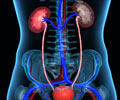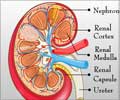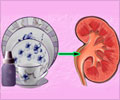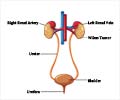
The scientists' findings are outlined in separate reports in the Proceedings of the National Academy of Sciences and Nature Genetics.
More than 250,000 individuals worldwide are diagnosed with kidney cancer every year, with lifetime risk of kidney cancer in the US estimated at 1.6 percent. Most kidney tumors are renal cell carcinomas, which when metastatic remain largely incurable.
Researchers with UT Southwestern's Kidney Cancer Program had previously identified a critical gene called BAP1 that is intimately tied to kidney cancer formation. Their latest research shows how BAP1 interacts with a second gene, VHL, to transform a normal kidney cell into a cancer cell, which in part appears to be based on the two gene's close proximity in humans, said Dr. Brugarolas, a Virginia Murchison Linthicum Endowed Scholar in Medical Research.
The newest findings suggest that the transformation begins with a mutation in one of the two copies of VHL, which is the most frequently mutated gene in the most common form of kidney cancer, clear cell type, which accounts for about 75 percent of kidney cancers. The VHL mutation is followed by a loss of the corresponding chromosome arm containing the second copy of VHL, as well as several other genes including PBRM1 and BAP1. This step eliminates the remaining copy of VHL and along with it, one of the two copies of PBRM1 and BAP1, two important genes that protect the kidney from cancer development. The subsequent mutation of the remaining copy of BAP1 leads to aggressive tumors, whereas mutation of the remaining copy of PBRM1 induces less aggressive tumors, said Dr. Payal Kapur, a key investigator of both studies who is an Associate Professor of Pathology and Urology, and the Pathology co-Leader of the Kidney Cancer Program.
This model also explains why humans born with a mutation in VHL have a high likelihood of developing kidney cancer during their life time. In these individuals, all kidney cells are already deficient for one VHL copy and a single deletion eliminates the second copy, along with a copy of BAP1 and PBRM1. In contrast, in other animals, these three genes are located on different chromosomes and thus more mutational events are required for their inactivation than in humans. Consistent with this notion, when UT Southwestern researchers mutated VHL and BAP1 together, kidney cancer resulted in animals.
Advertisement
Advertisement














